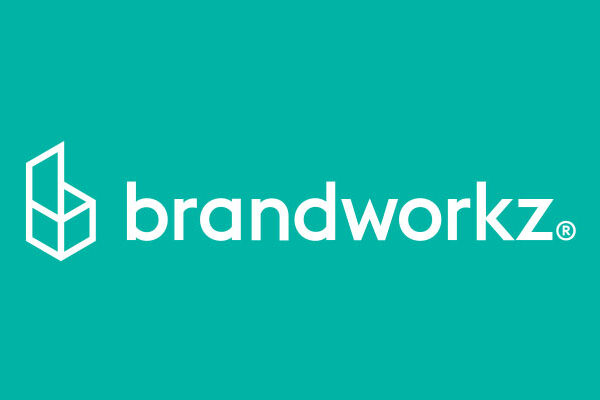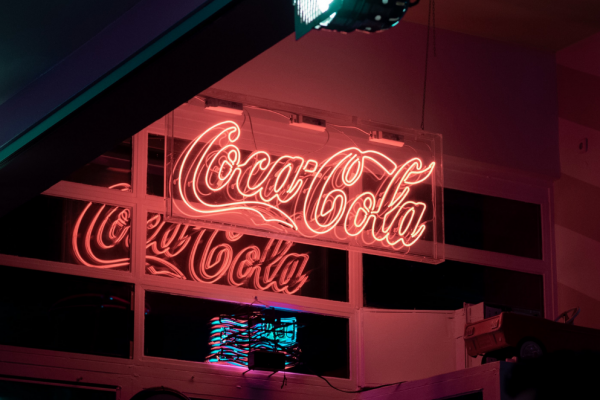Brand consistency is the glue that holds your entire brand and marketing strategy together. Without it, you’d just be blasting out an incoherent mess of messaging held together by little more than your brand name… and some brands can’t even get that right consistently.1 Therefore, it should be little surprise that presenting your brand consistently across all channels has been estimated to increase revenue by 23%.2
Of course, brand consistency, particularly across channels, is easier said than done — and digital marketing has really thrown this problem into overdrive. Not only is there now a seemingly endless spiral of new marketing channels, there is also an increased expectation for customisation and personalisation, requiring constant minor changes to on-brand creatives. And for the businesses that have gone through a recent revamp, nailing the basics of rebranding whilst maintaining brand consistency can be exceptionally difficult.
As a brand manager, you need to keep track of the different channels you use, and then make sure that everyone within your organisation understands what each channel demands — all while providing access to the right files, images, graphics, etc. at the right time. That list of variables is long, for example, to just name a few —
- Different file formats or files sizes
- Size or aspect ratio restrictions for images
- Colour contrast against different backgrounds
- Customisations for different campaigns, seasons, products, languages or markets
Realistically, the number of variations here is a bit like asking “how long is a piece of string?” And just like overthinking that idiom, it all comes down to defining a place to start. When it comes to brand consistency across channels, that means figuring out which channels you use and when you use them — which brings us directly to step one!
Suggested reading: For interactive help auditing your current brand management system and getting brand consistency right, check out our free resources — The Brand Consistency Toolkit.
Step 1: Gain a clear picture of the channels you have
You might be thinking… I already know this, of course, I already know this — and maybe you do. However, it’s always worth stepping back and really getting a perspective of the basics. For example, would you classify Microsoft Office as a marketing channel? Specifically, if you use Office documents for external comms, you really should consider it a channel that demands just as much consistency as more traditional options. Realistically, even solely internal channels of communication deserve attention because keeping internal branding in-line will help ensure wider understanding of your brand, which translates into more consistent branding overall.
So, you need to start by making a list of all the channels you use, and the specifics you need to take into account with each. Critical ones that you almost certainly use, along with some specific considerations for each, include —
- Your website: In the age of social distancing, your website has never been more important… and it was always important in the first place. Your other digital channels will all drive traffic towards your website, and the little details here really matter. Pay attention to favicons, icons, menus, and don’t forget about subdomains, microsites, your blog, eCommerce shops, internal pages, apps, resource pages and more. Remember, you have full control over your website, so make it count.
- External comms tools: External communications tools are how you communicate with customers, e.g. email, instant messaging, apps, notifications, banners, signatures, and newsletters are especially fundamental for consistency in this area.
- Social media: Social media pages provide a public, easily accessible profile for your business. Features worth particular consideration include stories, profile designs, upload schedules, and hashtags.
- Digital ads: Digital advertisements deliver promotional messaging across platforms. Particular care should be taken on targeted keywords, brand imaging, and eye-catching typography.
- Print media: Print media might be old school, but it’s definitely not dead. In the age of digital marketing, it can be easy for print to fall off the radar, or be managed using entirely different toolsets. This is a recipe for disaster… or, at least, inconsistency. When it comes to direct mail, publications, billboards, etc., you should be carefully curated around logo design, colour palettes, and social links that provide pulling power — just like you would online.
- Physical assets: Consistent physical assets including merchandise for events, tote bags for each purchase, and even in-office branded offerings provide self-sufficient, eye-catching marketing opportunities to help build your brand. Just like print media, you need to make sure that you integrate this non-digital medium with the same tools you use to manage digital consistency,
- Microsoft Office: As we’ve already noted, Microsoft Office’s central position in both internal and external comms makes it one of the most fundamental channels for brand messaging. Brand-specific templates and documentation are especially fundamental and could provide some (potentially public) embarrassment if not considered. For more details, check out our blog — 5 design basics often overlooked as part of a rebrand or new brand.
Of course, an exhaustive list is impossible. There may be other channels or use cases that we haven’t covered. For example, channels that sit outside of the usual customer-facing departments, e.g. HR, legal, delivery, etc. Fundamentally, every organisation is unique. However, the point is that by considering each different channel, you can then start thinking about the specifics that need to be controlled for using tools like your brand guidelines — which brings us straight to step 2…
Just before we move on, check out our 👉 Five Pillars of Successful Brand Consistency 👈 whitepaper and ensure you’ve got all channels covered … consistently!
Step 2: Having comprehensive brand guidelines
Unfortunately, even a degree in marketing channels isn’t going to help if you don’t also consider the true key to brand consistency — brand guidelines. By clearly outlining every possible element of your brand, and (almost more importantly) providing easy access across your enterprise, consistency should be a walk in the park if you get these right. Unfortunately, the fact that 60% of companies report marketing materials that sit outside of their guidelines suggests that often costly mistakes are being made here on a pretty regular basis.3
Well thought out brand guidelines should cover not only how your brand works, but also how all relevant aspects come together to create a strong brand identity that (ideally) bends to your will and marketing materials. Of course, the fundamental words here are ‘well thought out’. Poorly implemented or loosely outlined brand guidelines present the very real risk of creating more questions than they answer. To avoid this, it’s especially important to focus on too-often forgotten elements of an inclusive brand guideline document, including —
- Brand vision: Why your company exists/what differentiates you and why your clients should care.
- Tone of voice (TOV): How you use language to portray your brand message, which is specifically important on channels like Google Ads where text is all you have to work with.
- Website details: E.g. favicons, animations, banners, colour palette, etc.
- Logo: The key visual element of your brand, different logo permutations need to be a central part of your brand guidelines. Advanced capabilities like a Logo Finder that makes it easy to access the right logo at the right time can make a big difference.
- Visual guidelines: How you want your brand to look.
- Typography: The text you use across marketing outlets — specifically paying attention to support for different font formats across different channels.
- Other imagery: E.g. photos, illustrations, artworks.
It’s also essential that you consider how your employees access and interact with those guidelines to ensure that you truly are creating a consistent brand image that works for, rather than against you. For instance, companies like Audi and Netflix publish their brand guidelines online to ensure reach across even remote teams.4 You can take this benefit of ease even further by also considering features like —
- Multi-level flexibility: The ability to subdivide content and access across multiple sub-brands, campaigns or departments.
- Easily editable content: Making your brand guidelines easy to edit and update within a single system.
- Reporting: Brand reporting software provides clear access to information about what’s been edited, what needs to be updated and more, helping improve decision-making and access.
- Brand showcases: Allowing you to share best practices and highlight other teams in different markets to constantly improve outcomes.
- Automatic language adjustments: This is particularly important for large organisations operating across the globe.
For the logos that provide a one-glance visual representation of your brand, especially, one-click access to various permutations across relevant channels, a brand guideline software is fundamental, and is largely reliant on the templates that we’re going to consider next!
Let your logo do the talking!
👉Get a free demo of our logo finder software👈
Step 3: Enabling self-service access and using templates
As great as brand guidelines can be, it’s also important to remain realistic about how many people are actually reading them. Admittedly, you can increase the chances of this by keeping things simple and to the point, but to some extent, team members may still work with the assumption that you’ll provide them with everything they need to get branding right whether they know the details or not. This is a reasonable enough assumption, and it’s something that you should prioritise by providing self-service access to templates that have already ticked all your brand guideline boxes. This cuts out the middle-man, if you like, and is something that you can achieve by making room for —
- Logo Finders (or logo trees): Logos play perhaps the largest role of all in brand recognition, and will be the most used and misused asset in your collection. Logo Finders and decision trees allow users to access the right logo for every channel, all without really even understanding what they are looking for. Just answer a few questions and, boom, there you go!
- Web-to-publish templates: Driven by the same general premise, web-to-publish templates provide accessible, customisable, pre-approved marketing materials that enable even individuals with little to no design skill to make low-level, channel-dependent artwork changes. By minimising the need for approvals this enables the implementation of often-overlooked brand guidelines at the click of a button company-wide, making it far easier to maintain brand consistency while still creatively customising assets for different locations, target audiences or campaigns.
Realistically, there’s also a third element worth considering in this respect, and that comes in the form of your digital asset management (DAM) platform overall, which should ideally create an easily searchable ‘home’ that keeps all of your digital assets under one roof. This ensures that different permutations of whatever branding element marketing teams are using sit side-by-side, making it far less likely that confusion or convolution will result in the wrong logo appearing in entirely the wrong place. The importance of one-source asset management also leads us nicely onto our next point, which, you’ll be glad to hear, is all about making everyone’s lives easier.
Pro tip: Although this step is important for everyone, brands with serious marketing compliance considerations (for example, those in financial services) should make templating a number one priority.
Step 4: Make your assets visible and easy to access
Simplified consistency is the whole point of implementing templates or DAMs in the first place, but as workforces and marketing channels become ever more distributed, it’s no longer enough to assume that pre-planning templates will provide overall brand control. It’s also essential to consider visibility across brand assets in their entirety (e.g. typography, imaging, sounds, etc.), and the ease with which team members can access them. There are three big components to this:
- Single sign-on: You need to make all of your tools as simple to sign into as possible. Ideally, this is a single sign-on that is synced with your employee management system — allowing everyone to simply sign in with a single password, without the need to ever validate access to your brand management system specifically. Remember, new employees are likely to leave signing up to tools until they actually need to use them, and if they then need to wait for confirmation, it’s very possible that they will go rogue and start creating inconsistent assets.
- Access to the right material: You don’t want to overwhelm users with choice. You need to use permissions to limit visibility to just what’s relevant to different users. You should also cull your brand assets on a regular basis so that users can simply review a handful of quality choices — rather than needing to wade through a pool of mediocrity to find the right thing.
- Integrations with the software people actually use: Most users will use the assets they are looking for in another system, e.g. Microsoft Office, websites, etc. A good DAM will be able to integrate directly with different platforms — e.g. PowerPoint, Adobe, Google, etc. — enabling users to access on-brand assets without ever leaving the tool they were originally using.
Ultimately, all of this provides maximum visibility over what exists. When users know what assets actually exist, team members are way more likely to use consistently branded content, highlighting the need for a comprehensive DAM that, as well as centralising brand management, delivers crucial considerations including user-based permissions, preview capabilities, searchable metadata, and integrations. The next step is to extend that visibility to creatives in production, and unite both your storage and creation process within a single system
Step 5: Manage your ongoing creation process
So far, we’ve discussed the different ways to get your branding house in order. Unfortunately, just like in your real house, one spring clean is never going to be enough to get rid of all those unwanted brand cobwebs for good — you also need to spend a little time on brand maintenance.
A failure to review or update can complicate, convolute, and ultimately cost you all-important customer trust. Maintenance focuses are largely going to depend on your particular industry/messaging needs, but will most often depend on —
- Approval processes to ensure consistency and oversight.
- Asset alerts for visibility across updates.
- Expiry dates for assets on review to make sure they’re on-brand, compliant, and always relevant.
- Auditing content created by teams to make sure it’s on-brand.
- Regular brand training to keep everyone on the same page.
This might seem a lot to consider, but a decent DAM should incorporate these considerations as standard and, if you’re going from inefficient manual processes, your workload should actually reduce despite this significant growth in capability. This is especially true if you implement a one-source DAM solution that entirely removes manual file transfers and back-and-forth branding processes in place of one-click, comprehensive automations that take care of consistency spring cleans so that you don’t have to.
The more integrated your toolset, the simpler consistency becomes
The more avenues your brand takes, the harder it becomes to achieve consistency. Brand management solutions that simplify and solidify your brand messaging overall play a key role in the forward march of success, but convoluted solutions that scatter your brand assets are never going to help you to achieve the consistency you need.
We build Brandworkz precisely with this challenge in mind, and offer a single solution able to simplify every aspect of brand consistency and communication company-wide. By uniting DAM, workflow, logo finder, templating and brand guideline tools within a single platform, we enable integrated collaboration that will span all of your marketing channels. Of course, you should just take our word for it. Check out your free demo of Brandworkz today and find out first-hand how it can transform your operations.
1Cathay Pacific on Twitter
210 Marketing, Web Design & Branding Statistics To Help You Prioritize Business Growth Initiatives
3If You Want to Make 23% More Money, Then Get Consistent
412 Great Examples of Brand Guidelines (And Tips to Make Your Own) Just look at them





